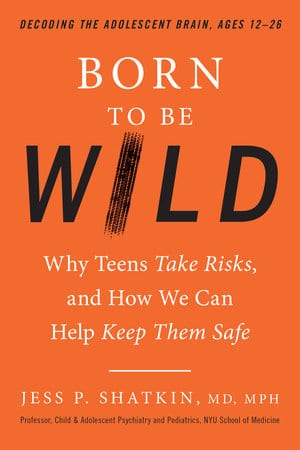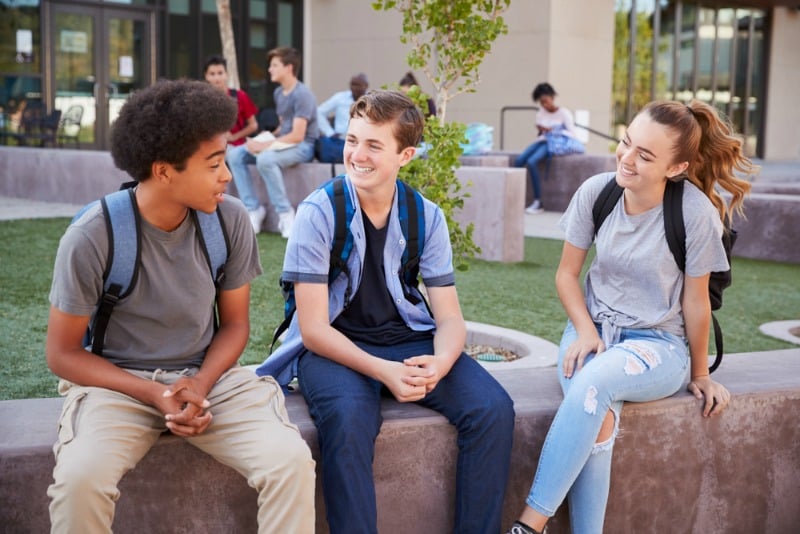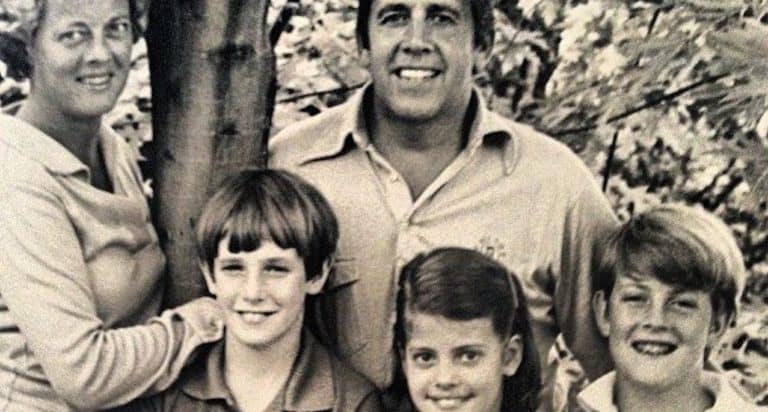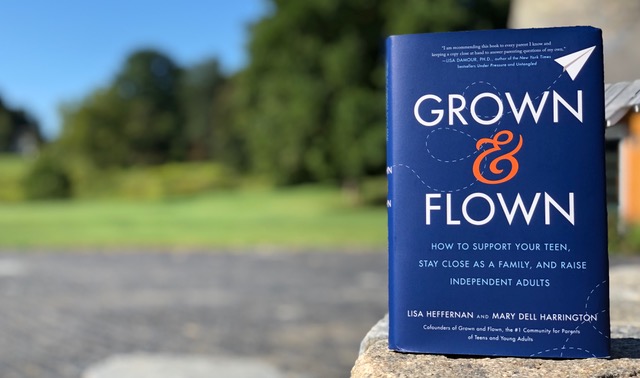It’s a boy. A boy. And yet another boy.
The ultrasound confirmed that I was officially a Mom of triplet sons which meant I was going to have my work cut out for me. It wasn’t the dirt and grime or nonstop action of raising young boys that scared me. The thought of having three sons who would grow into teenagers with a natural ‘need for speed’ is what intimidated me.
Our trio are now sophomores in high school and the new book Born to Be Wild: Why Teens Take Risks, and How We Can Help Keep Them Safe interested me to review because I want to know if we can really help our teenagers navigate risky choices more successfully.
Can parents make a difference when it comes to minimizing risk in their child’s life?
According to Dr. Jess. P. Shatkin, author of Born to Be Wild we can absolutely make a difference by being proactive in our parenting.
Shatkin is a professor of child and adolescent psychiatry and pediatrics at New York University School of Medicine and also a dad of two teenagers. His new book tells us why teens take risks, and how we can help keep them safer.
1. How can we positively influence our teenager to make the best choices?
When our kids are young, we need to make many choices for them. As they age toward the teenage years, we need to curate their choices. Adolescence is an enormous developmental opportunity. During these years, we must allow our kids to practice all of the many things that they will one day need to do independently as adults, but we as parents must also continue providing close supervision.
2. How do we help our kids make healthy decisions when it comes to risky behaviors?
Dr. Shatkin recommends we take Wayne Gretzky’s advice and skate to where the puck will be. See the reality of the road ahead and be proactive in designing strategies to reduce upcoming risk factors in your child’s life.
We’re only kidding ourselves if we choose to believe that our adolescents won’t face risky situations each day. Instead of waiting for those risks to happen, we can anticipate the dangers and be ready for them.
Texting while driving, binge drinking, bullying, unprotected sex, vaping and many other risk factors are real concerns and keep us worried about our growing adolescents today.
Here are 6 proactive parenting strategies for reducing risks in our teens’ lives.
1. Delay their exposure to alcohol, tobacco, and drugs as long as possible
I’m baffled by the number of parents today who condone minors using illegal substances as long as they don’t get in a car and drive after.
I asked Dr. Shatkin what he thought of the ‘party bus’ trend for high schoolers today and here’s what he had to say…
The issue basically comes down to whether or not parents wish to condone their kids’ use of alcohol and/or drugs. And this brings us to a parenting decision point – if you’re not comfortable with your child using alcohol and drugs, then they don’t go on the bus. If the parents are okay with their kids using, then they can go. To be pithy, it’s as simple as that – kids on these buses will almost certainly be using, and although they won’t be driving, they will likely engage in other risky behavior (e.g., trying to impress one another in ways that, when drunk, can become dangerous quickly).
The kids on these buses are still minors, so drinking alcohol or smoking weed is an illegal behavior. I don’t think that party buses are a good message, nor do I think they are safe for our kids; even though they may not be driving, we’re still facilitating their alcohol and drug use, and they’re still at great risk of bad things happening from overuse, even if they’re not driving.
And Dr. Shatkin’s most brilliant words of all, “We need to remember that it’s okay to be strict as a parent sometimes.” Hear that fellow Mean Moms?
2. Build resilience in your kids.
Resilient adolescents simply manage risk better.
Studies have shown that characteristics like being good at managing emotions, having good impulse control, showing empathy toward others, having a sense of purpose in life and feeling self-efficacious, or believing that you have some control over your own life, result in higher levels of resilience among adolescents.
3. Encourage well-regulated risky activities
Shift the risk paradigm from one of fear to opportunity. We can encourage our kids to participate in well-regulated risky behavior, like rock climbing, whitewater rafting, go-karting or skateboarding rather than leave them to their own devices. Take them to amusement parks and concerts where we can supervise them from a distance.
By providing our kids with meaningful challenges that engage their risky brains, we appease their “need for speed” and help them establish new skills and neural connectivity, all of which will enhance their problem-solving skills, emotional regulation, and self-efficacy.
4. Find time to just “be” with your kids
The more we know about our children, the fewer risks they tend to take. Simply spend time with your kids and get to know who they are and what makes them tick. Know their friends. Sit around the dinner table with them and talk. Let them know you care about them and their life without being overbearing.
We must have everyday interactions, teachable moments, and specially chosen activities and outings to work with teens’ need for risk, rewards and social acceptance, not against it.
5. Monitor and manage media exposure
Parents cannot allow kids free reign of devices. We must put limits on our kids’ use of smartphones, video games, and television. Shatkin recommends having a fruit bowl or other convenient spot where phones go until homework is completed. Our teens need us to help them set limits, whether they understand that or not.
6. Practice for their difficult moments
Planning out your teens’ decision pathways ahead of time will lower their anxiety and help them feel more in control.
There’s a balance between over policing your kids and trusting them to make good decisions. They need practice making decisions in risky situations just like we need practice in monitoring their behavior.
Having better decision-making abilities are correlated with having fewer troubles with peers, better conduct and greater emotional stability in adolescence. We must give our teens the ability to develop good judgment and decision-making skills.
The X-Plan made it’s way around social media earlier this year as the author encouraged parents with his proactive family tool for teens to use in their difficult moments.
Related:
Remember These 2 Things When You Chaperone Your Teen’s Party
Why Average American Teens are Exhausted and Burnt Out
10 Best Valentines Gifts for Your Teens and College Kids











